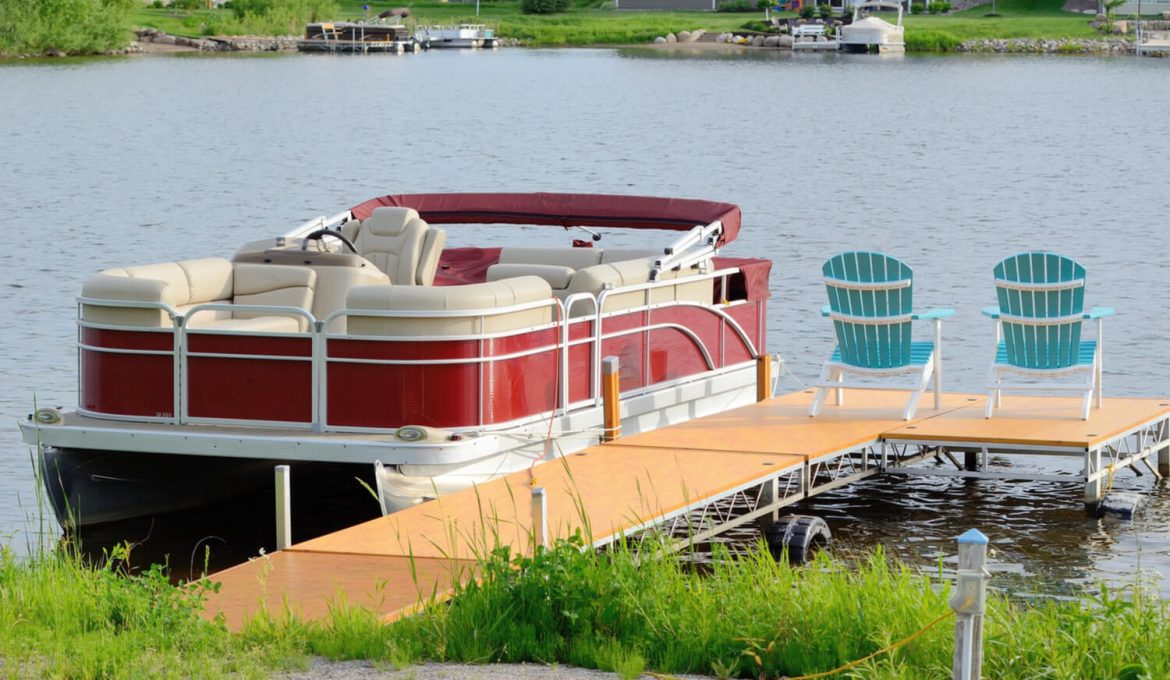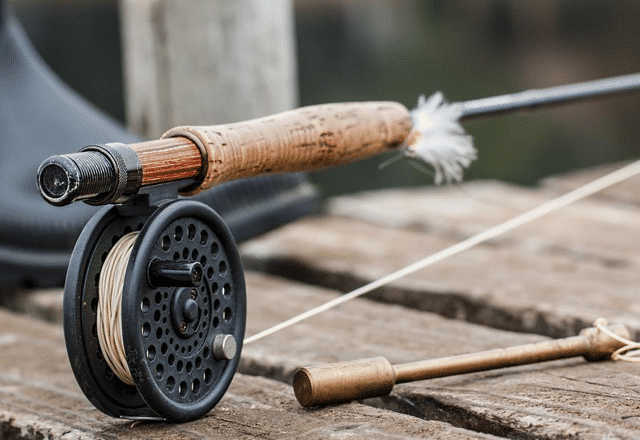Whether your location requires winterizing your boat or you can keep it in service year-round, it pays to know how to properly maintain your pontoon boat for winter. Freezing temperatures arguably pose the greatest threat to your boat’s major components, but there are other risk factors as well.
Failing to maintain your pontoon boat for winter is like neglecting regular maintenance on your vehicle. It is going to lead to larger, and more expensive, problems down the line. So follow these tips to keep your pontoon boat in great condition year-round.
Preparing Your Pontoon Boat for Winter
When winter is approaching, there are a few maintenance tasks that you should do to properly maintain your pontoon boat before the weather gets too cold.
Start with a Deep Clean

Even if you’re not winterizing or storing your boat for the winter, the fall is a great time to give your pontoon boat some well-deserved TLC. After all, it has been working overtime to keep you afloat (literally!) all year long.
Start by pulling all of your pontoon boat accessories out of your compartments and storage areas. Clean these accessories individually and then vacuum out any remaining debris in the compartments. It’s easiest to do this when your boat is still dry, so we recommend starting with this step.
Then you can work your way from top to bottom to clean everything from your pontoon bimini to the bottoms of the pontoons themselves. Much of this can be hosed down to complete an initial rinse, but you’ll need a quality pontoon boat cleaner to remove more pesky residue.
Clean and Store Equipment Separately

To prevent moisture from causing mold growth on things like your life vests, tow ropes, and other pontoon boat accessories, remove them from your boat and store them inside your garage or another protected area.
This is a great opportunity to give everything a rinse as well, especially if you use your pontoon boat in saltwater. Even if you plan to use your boat sporadically throughout the winter, it’s better to grab the gear you need before you head out than to subject that gear to the winter elements.
Prepare Your Pontoon Cover

If you’re not fully winterizing your pontoon boat, you should still keep it covered when you aren’t actively using it. So take out your pontoon boat cover and make sure it is in good condition to prepare for winter. Look for holes or tears and make sure that the bungee cord or string that is used to secure the cover is intact.
If your cover is made of canvas material, consider applying insect or rodent repellent to discourage mice and other pesky critters from turning pieces of your cover into insulation for their winter den.
Dry and Cover

It’s best to clean your pontoon boat in the mid-morning so it will have a full afternoon to dry before temperatures dip. Your pontoon boat should be completely dry before you put your pontoon cover on.
In addition to covering your pontoon boat throughout the winter, you should consider pontoon seat covers as well. Covering your pontoon boat seats to minimize UV degradation is a smart move whenever you don’t fully cover your boat. And they can give you an extra layer of protection if you aren’t fully winterizing your boat.
If you keep your boat outside during the winter, consider adding cover supports to shed water if you’re hit with an unexpected rainstorm. Naturally, pontoon covers sag and allow water to pool. If this occurs too much, it can rip the cover and dump water into your boat.
How to Maintain Your Pontoon Boat Through Winter

If you rarely experience freezing overnight temperatures, you might keep your boat ready to go year-round. Still, here are some suggestions to help you maintain your pontoon boat through the colder (and often wetter) months of the year:
- Remove the drain plug after you load your boat onto your trailer but before you pull all the way up the boat ramp to drain water out of the transom.
- Replace it before launching your boat again!
- Evacuate standing water from all storage areas and the engine compartment
- Park your boat in a covered area if possible.
- If you don’t have a covered area, be sure to check on it before and after expected storms to make sure the cover is intact and secure.
- Keep a drop light in the engine compartment on cold nights to protect the engine block from freezing.
- If you do get an unexpected dusting of snow, clear your boat immediately.
- Clean your boat after each use and after heavy rains to prevent the accumulation of minerals, such as magnesium and calcium, that can cause streaking and corrosion.
- Dry your boat out completely after each outing.
- This might mean ending your days earlier instead of staying out until twilight.
- Put your watersports equipment in the garage between trips
- Place mothballs throughout the boat to detract unwanted furry guests.
- Install your pontoon boat cover and make sure it’s secure against winter winds
Keeping your boat in the water throughout the entire winter is NOT RECOMMENDED. Boats kept in saltwater are five to 10 times more likely to experience corrosion and boats kept in freshwater aren’t immune either, as they can be subject to blistering and mold growth.
Due to the unpredictability of air and water temperature changes, boats should be dry-docked through the winter to avoid issues with freezing waters, high winds, and other environmental factors. If you don’t have a trailer for your pontoon boat, consider placing it on a pontoon dolly to keep the weight off the pontoons for the winter months.
Tips for Winterizing Your Pontoon Boat

For most pontoon boat owners that live north of the 35th parallel (35° N latitude), winterizing your boat or keeping it in a climate-controlled storage facility is a must. And actually, there are plenty of high-altitude locations in the southern US that require winterization too.
Here are some simple steps for winterizing your pontoon boat:
Consult Your Owner’s Manual
While we’ll outline the basic steps for winterizing a pontoon boat, manufacturers may recommend other procedures depending on their specific boat designs. To ensure you’re doing the most comprehensive job possible, read all the winterization instructions in your owner’s manual before proceeding.
Attach Your Motor to a Water Source

Start with your engine because it’s one of the most expensive components to replace if neglected. Attach muffs to the water intake on your motor and connect a water hose to the muffs.
You’ll run your motor in later steps but never do so without water as it can cause motor damage. Test to make sure water is running through your motor’s water intake properly before proceeding.
Fill Up Your Gas Tank (and Add a Fuel Stabilizer)

Next, fill your gas tank to about three-quarters of its capacity and add a fuel stabilizer. Don’t completely top it off to leave space for temperature expansion. Be sure to read the instructions on your fuel stabilizer to add the correct proportions.
You may also change your water/fuel separator at this point. If you do, consult your boat’s manual to find its exact location and recommendations for replacing it. It’s not an overly technical pontoon boat maintenance task, but expect to spill a little fuel during the process.
Once your tank is full with fuel and a stabilizer (and your new separator is installed if you choose to do so) turn on your engine and let it run for a few minutes to let the stabilizer enter the entire fuel system.
Change Your Oil and Replace the Filter

Shut your engine back off and prepare to change your gear oil. You’ll need something to collect the oil in before you pull the plug. With your collection container in place, remove the oil filler cap to help the oil to flow out more smoothly.
For larger motors, a drain tube may be helpful to get oil from the drain hole into your collection container without minimal spillage. You can pull your oil filter at this time as well and then lower your engine before removing the drain plug and allowing oil to empty completely.
Keep track of your drain plug and its washer during this step. Clean the plug and washer to ensure a quality seal when you install them again. These components are vital to keeping oil in and water out.
Now you need to install a new filter and pump in fresh oil until it starts to flow out. Then replace the filler cap and run your engine for about 30 seconds to allow oil to circulate through the system.
Apply Fogging Oil to the Carburetor and Spark Plug Holes

Next, locate a can of fogging oil from your marine maintenance and repair kit. Fogging oil is an anti-corrosive solution that protects the internal surfaces of your carburetor and cylinders.
It should be applied to the carburetor when the motor is running, but you need only apply a small amount at a time. The motor will stall if too much oil is applied too quickly. Your goal is to coat the inside of the engine with this oil.
After each small spray, allow the engine a few seconds to recover so that it doesn’t cut off completely. You shouldn’t need more than a handful of sprays for your application to be effective.
Some also recommend removing and replacing your spark plugs at this stage. You can also spray fogging oil into the spark sockets during this process. However, if you don’t have experience changing spark plugs on a boat engine, we recommend seeking professional assistance for this pontoon boat maintenance task.
Drain Engine Coolant

At this time, grab something to collect coolant and drain it. Consult your pontoon’s manual to see where your coolant drain is located. Coolant (and engine oils) should be disposed of properly according to your local regulations.
Replace your engine coolant with a non-toxic antifreeze with a propylene-glycol base. Antifreeze with an ethylene-glycol base should be avoided because it can release toxins into the water if it isn’t drained and rinsed out completely during your de-winterization process.
Empty Ballast and Holding Tanks

If your pontoon boat has ballast tanks for additional water displacement, these tanks should be completely empty before storing your boat for the winter. This also applies to holding tanks designed for freshwater or wastewater.
The best time to drain your ballast tanks and freshwater tank (if applicable) is when you’re still on the water. However, you’ll need to find a proper waste disposal station to empty your grey and black water tanks before winterization.
Clean and Make Repairs

Once you’ve winterized your engine(s) and your tanks are empty, open your pontoon bimini and give it a cleaning. Then you can fold it down or even remove it entirely to prepare for winterization.
You can refer back to some of our cleaning tips from above, but we’ll repeat that it’s a good idea to take all of your towable tubes, buoys, ropes, and other boating accessories out for the winter.
Because the final step of boat winterization involves semi-permanently shrink wrapping or tarping your entire boat, you won’t have access to anything you leave inside until the spring comes.
This is also a great time to make any repairs that you’ve been putting off for the boating season. Whether you need to install new pontoon seat covers or touch up the exterior with a little marine-grade paint, now is the time before your boat is out of commission for the rest of the season.
Remove and Charge Battery

When your boat is going to be inactive for several months, remove your battery and store it in a dry, weather-protected area in your home. A garage is a great option, but you should also fully charge your battery before storing and forgetting about it until spring.
Make a note to check your battery’s charge every 30 days throughout the winter. Recharge it to 100% of its capacity at these intervals to keep it in good condition and make sure it’s ready to reconnect during your spring de-winterization process.
Seal It From the Elements
There are three boat wrap options that most pontoon boat owners use for winterization: shrink wrapping, tarping, or a canvas cover. Here’s a brief overview of each technique:
Shrink Wrapping Your Pontoon Boat

This is arguably the best way to seal your pontoon from the winter elements. It requires the help of a professional boat winterization service, however, which makes it the most expensive of these three options.
Depending on the size of your boat, shrink wrapping can cost anywhere from $500 to $5,000 and it must be done annually, which adds quite a bit to your pontoon boat maintenance costs. Still, it provides much better protection against the elements than a tarp.
Tarping Your Pontoon Boat

Tarping your pontoon boat for the winter typically costs around $100. However, a tarp provides much less durability against the elements and it also relies on grommets that tear all-too-often.
If you do go this route, find a heavy-duty tarp and be very careful about how you secure it. Add supports under the tarp to help water shed naturally without pooling. Pooling water will rip a tarp and undo your hard work in short order.
Using a Canvas Boat Cover

A high-quality canvas boat cover can be the most economical long-term option for pontoon boat winterization. Depending on size and design, pontoon boat covers typically cost anywhere from $150 to $5,000.
The good thing about using a boat cover for winterization is that you don’t have to re-invest in a new cover every year. This only holds true if you take precautions and promptly remove snow that falls on the cover. Otherwise, the weight of snow and water will rip or tear your cover just like it would do to a tarp.
If you go this route, look into boat cover supports as well. Place these supports on the floor of your pontoon boat before you install the cover. They create high points that promote more natural water shedding and prevent pooling.
A Final Note on Winterization
Depending on your pontoon boat’s regular maintenance schedule, there may be additional items to address during winterization. Some of these tasks, such as changing gear oil and replacing spark plugs, are a bit more technical than the rest.
If you’re not comfortable with any of the tasks outlined in your boat’s instructions for winterization, find a boat winterization specialist in your area. Some do charge a pretty penny, but they will still keep maintenance costs lower than major repairs caused by improperly completing more technical winterization tasks.
Benefits of Putting Your Pontoon Boat in Storage for the Winter

While some winterization and maintenance will still be required, putting your pontoon boat in storage for the winter makes things a lot easier. Here are some benefits of finding a climate-controlled facility to maintain your pontoon boat in storage for the winter:
- It’s convenient! You do it once and come back when spring is blooming
- You don’t have to worry about checking on your boat throughout the winter
- Your boat is in a secure location if you go away for an extended winter vacation
- Incoming storms won’t cause you to scramble to protect your boat at the last-minute
- You can avoid shrink wrapping or tarping
- It clears space in your driveway and makes your snow removal efforts easier
Of course, the main downside of putting your boat in storage is that it costs money. It also won’t be as convenient to hitch it up if you do decide on a winter boating excursion. So this option is really best for folks that only use their pontoon boat seasonally.
Conclusion
If you want your pontoon boat to keep you afloat for years to come, all of these boat maintenance tips are important. Keep in mind that your climate will largely dictate how careful you need to be.
Places that get more extreme winter temperatures and storms call for complete winterization while milder climates can allow pontoon boat owners to get away with doing a little less.
For those looking to upgrade their pontoon boat before spring, check out the Nepallo Pontoon and sign up for alerts to be the first to know when it’s exclusively available from Overton’s.





[…] ways to protect your boat to ways to protect yourself and other passengers, we’ll cover it all so you can enjoy your time […]
[…] of the best vessels on the water. One deep dive into the specifics and it’s not hard to see why pontoon boats are drawing crowds wherever they […]
[…] How to Properly Maintain Your Pontoon Boat for Winter […]
[…] How to Properly Maintain Your Pontoon Boat for Winter […]